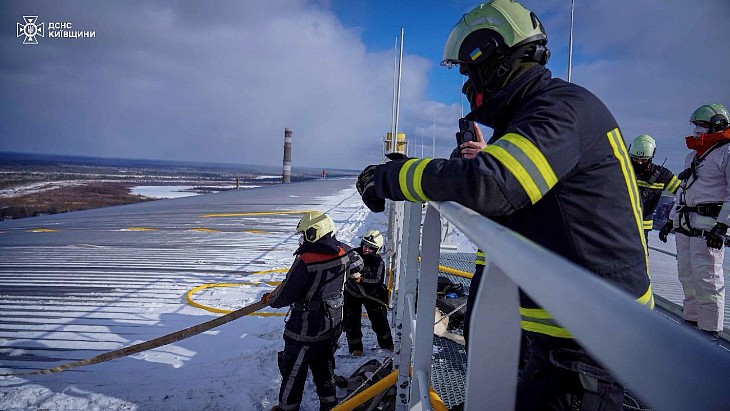IAEA assesses operational safety of Torness plant
.jpg)
An IAEA Operational Safety Review Team (OSART) visited the Torness plant on the east coast of Scotland from 22 January to 8 February this year at the request of the UK government. The 16-member team comprised experts from Belgium, Bulgaria, Canada, Finland, France, Hungary, the Netherlands, Russia, Sweden and the USA, as well as IAEA staff members.
OSART missions aim to improve operational safety by objectively assessing safety performance using the IAEA's Safety Standards and proposing recommendations for improvement where appropriate. Follow-up missions are standard components of the OSART programme and are typically conducted within two years of the initial mission. The mission to Torness was the IAEA's 199th OSART mission since the reviews started in 1982.
The OSART mission to Torness reviewed 12 areas: leadership and management for safety; training and qualification; operations; maintenance; technical support; operating experience feedback; radiation protection; chemistry; emergency preparedness and response; accident management; human, technology and organisational interaction; and, long-term operation.
In its report - which has now been made publicly available - the team said: "Throughout the review, the exchange of information between the OSART experts and plant personnel was very open, professional and productive. Emphasis was placed on assessing the effectiveness of operational safety rather than simply the content of programmes."
The team identified eight good practices, including: the plant adopted an advanced Gas Cooled Reactor Fuel Floor Mock-up in support of improved fuel route training; it also developed a marine ingress weather alert system; and, it developed Corrosion Cards to support the corrosion programme.
The OSART also identified 19 issues, resulting in four recommendations and 15 suggestions. The most significant proposals for improvement include that the plant should improve its action plans, self-assessment programme, performance targets and measures in "a more challenging and aggressive manner". The team said Torness should also improve the quality and practice of operating procedures to fully ensure safe plant operation. In addition, the plant should enhance its screening and categorisation process to ensure that events are assigned the appropriate priority and investigated in accordance with their actual or potential significance.
"Nuclear safety is our overriding priority and we are always working to drive forward improvements across our fleet of stations," said Brian Cowell, EDF Energy's managing director for the generation business. "As well as our own internal processes and work with our regulator, the Office for Nuclear Regulation (ONR), an important way of achieving this is through regular in-depth reviews involving international experts."
The ONR noted that although the focus of the OSART mission was the licensee, EDF Energy, its inspectors "provided assistance to the international team in understanding our regulation of operations at the station, and the OSART shared their mission findings with ONR to gain a regulatory perspective."
Donald Urquhart, director of the ONR's Operational Facilities Division, said: "We welcome the OSART report findings and recognise the importance that international benchmarking offers to the sites that we regulate." He added, "We have a very thorough inspection programme at all the sites we regulate, and will continue to ensure licensees strive for continuous improvement."
The Torness plant comprises two 615 MWe Advanced Gas-cooled Reactors. Unit 1 began commercial operation in 1988 and unit 2 in 1989. They are expected to operate until around 2030.










_88592.jpg)

